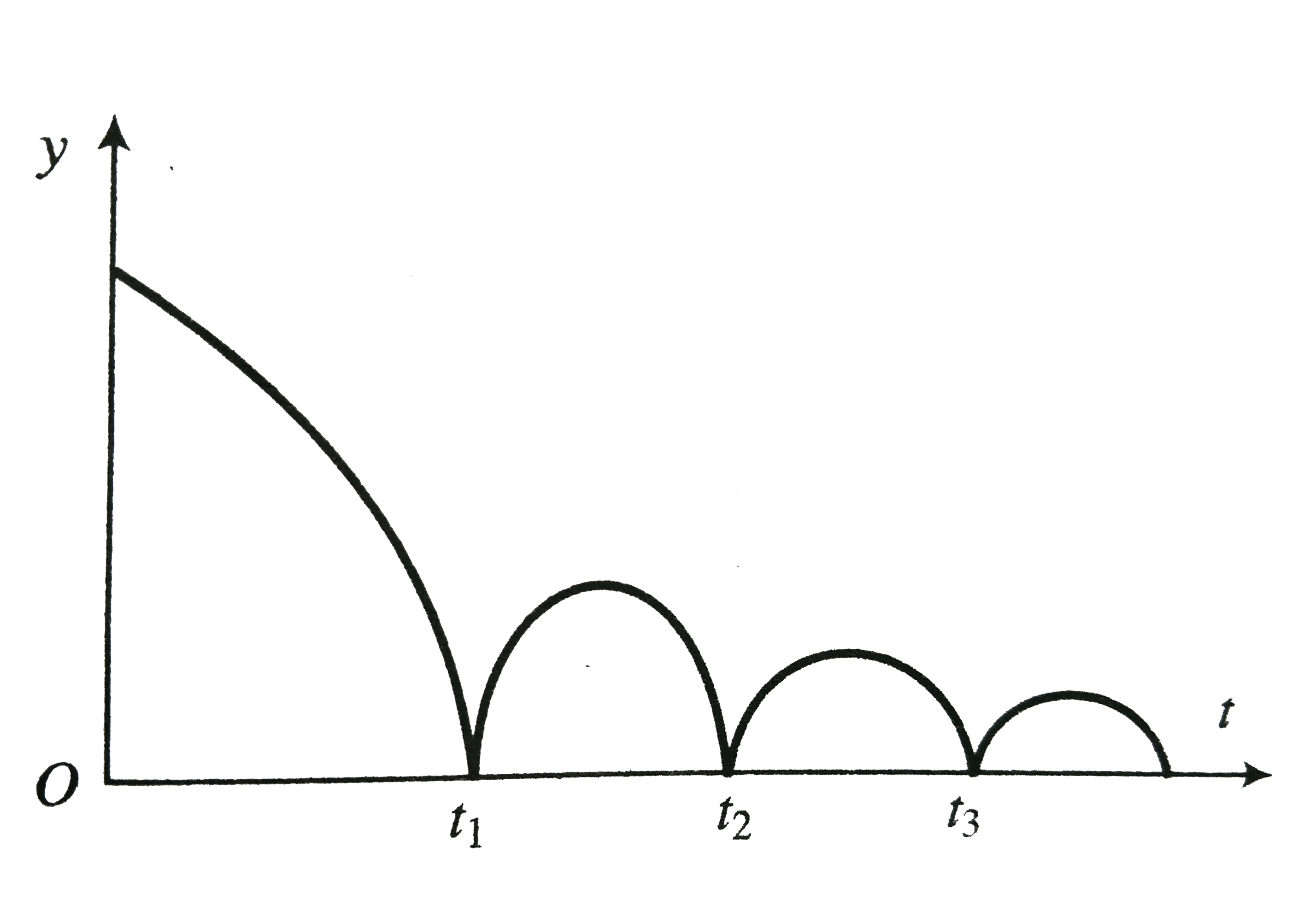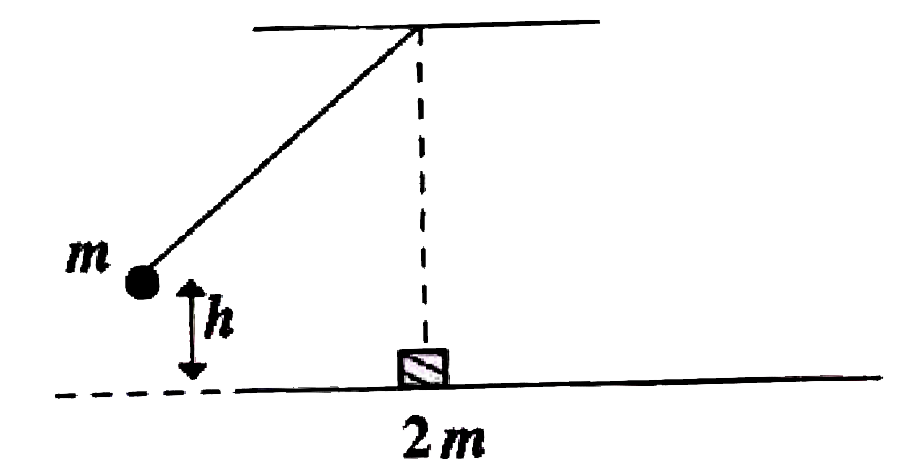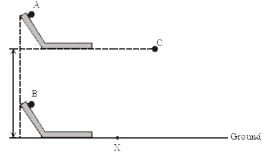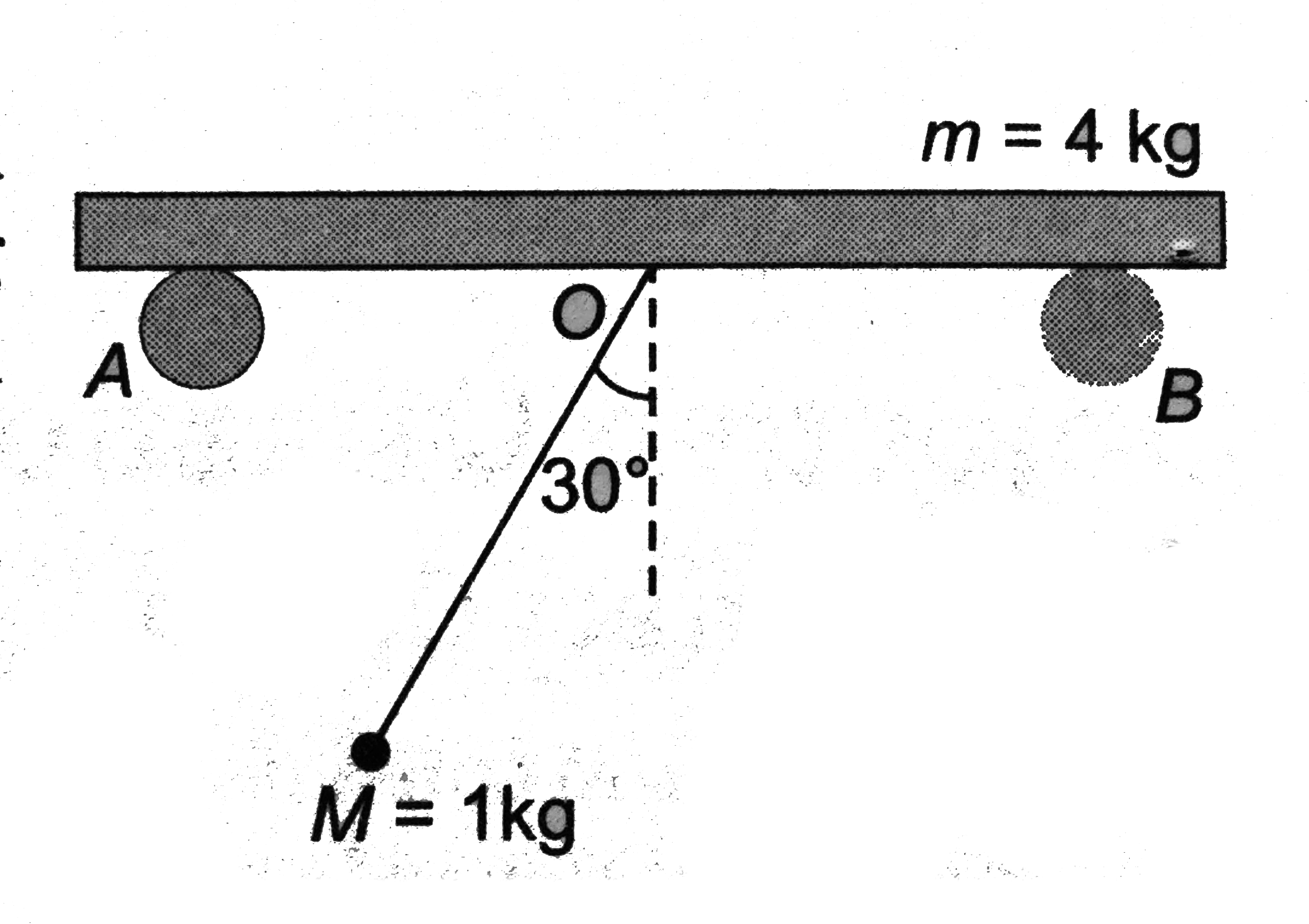Motion of a ball bearing inside a smooth curved bowl, when released from a point slightly above the lower point is
simple harmonic motion
non-periodic motion
periodic motion
periodic but not S.H.M.
The correct Answer is:A, C
The ball will execute S.H.M. with a finite period.
Topper's Solved these Questions
- BOOK - MODERN PUBLICATIONCHAPTER - OSCILLATIONS EXERCISE - NCERT Exemplar Problems Subjective Question (Very short Answer Type Questions )10videos
OSCILLATIONS
- BOOK - MODERN PUBLICATIONCHAPTER - OSCILLATIONS EXERCISE - NCERT Exemplar Problems Subjective Question ( short Answer Type Questions )6videos
OSCILLATIONS
- BOOK - MODERN PUBLICATIONCHAPTER - OSCILLATIONS EXERCISE - NCERT Exemplar Problems Subjective Question (Multiple Choice Questions (Type-I))11videos
OSCILLATIONS
- BOOK - MODERN PUBLICATIONCHAPTER - MOTION IN A STRAIGHT LINE EXERCISE - CHAPTER PRACTICE TEST16videos
MOTION IN A STRAIGHT LINE
- BOOK - MODERN PUBLICATIONCHAPTER - PHYSICAL WORLD EXERCISE - Revision exercises (Long answer questions)6videos
PHYSICAL WORLD
Similar Questions
Which of the following examples examples represent (nearly) simple harmonic motion and which represent periodic but not simple harmonic motion?
(a) The rotation of earth about its axis. (b) Motion of an oscillating mercury column in a U tube,
(c) Motion of a ball bearing inside a smooth curved bowl, when released from a point slightly above the lower most position. (d) General vibrations of a polyatomic molecule about its equilibrium position.View SolutionTwo pendulum bobs of masses m and 2m collide head on elastically at the lowest point in their motion. If both the balls are released from a height H above the lowest point, to what heights do they rise for the first time after collision?
View Solution
Knowledge Check
- Question 1 - Select One
The graph as shown in. below descrines the motion of a ball rebounding from a horizontal surface being released from a point above the surface. Assume that the ball colledes each time with the floor inelastically. The quantity represented on the y-axis in the is the balls (take upward direction as positive)
 .ADisplacementBVelocityCAccelerationDMomentum
.ADisplacementBVelocityCAccelerationDMomentum - Question 2 - Select One
A ball of mass m suspended from a rigid support by an inextensible massless string is released from a height h above its lowest point. At its lowest point it collides elastically with a block of mass 2m at rest on a frictionless surface. Neglect the dimensions of the ball and the block. After the collision the ball rises to a maximum height of–
 Ah/3Bh/2Ch/8Dh/9
Ah/3Bh/2Ch/8Dh/9 - Question 3 - Select One
Two pendulum bobs of mass m and 2m collide elastically at the lowest point in their motion. If both the balls are releasd from height H above the lowest point,
Velocity of the bob of mass m just after collision isA√2gH3B53√2gHC√2gHDNone of these
A block sides down a smooth inclined plane when released from the top, while another falls freely from the same point. Which one of them will strike the ground : (a) earlier (b) with greater speed ?
View SolutionA block slides down a smooth inclined plane when released from the top, while another falls freely from the same point :
View SolutionA block slides down a smooth inclined placne when released from the top, while another falls freely from the same point. Which of the following is/are correct ?
View SolutionThree balls, A, B and C, are released and all reach the point X (shonw in the figure). Balls A and B are released from two identical structures, one kept on the ground and the other at height, h, from the ground as shown in the figure. They time tA and tB respectively to reach X (time starts after they leave the end of the horizontal portion of the structure). The ball C is released from a point at height, h, vertically above X and reaches X in time tC. Choose the correct statement.
 View Solution
View SolutionA ball of mass 1kg is suspended by an inextensible string 1m long attached to a point O of a smooth horizontal bar resting on fixed smooth supports A and B. The ball is released from rest from the position when the string makes an angle 30∘ with the vertical. The mass of the bar is 4kg. The displacement of bar when ball reaches the other extreme position (in m) is
 View Solution
View Solution

